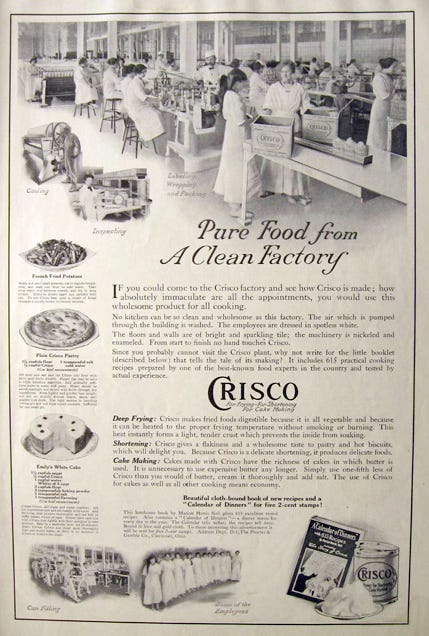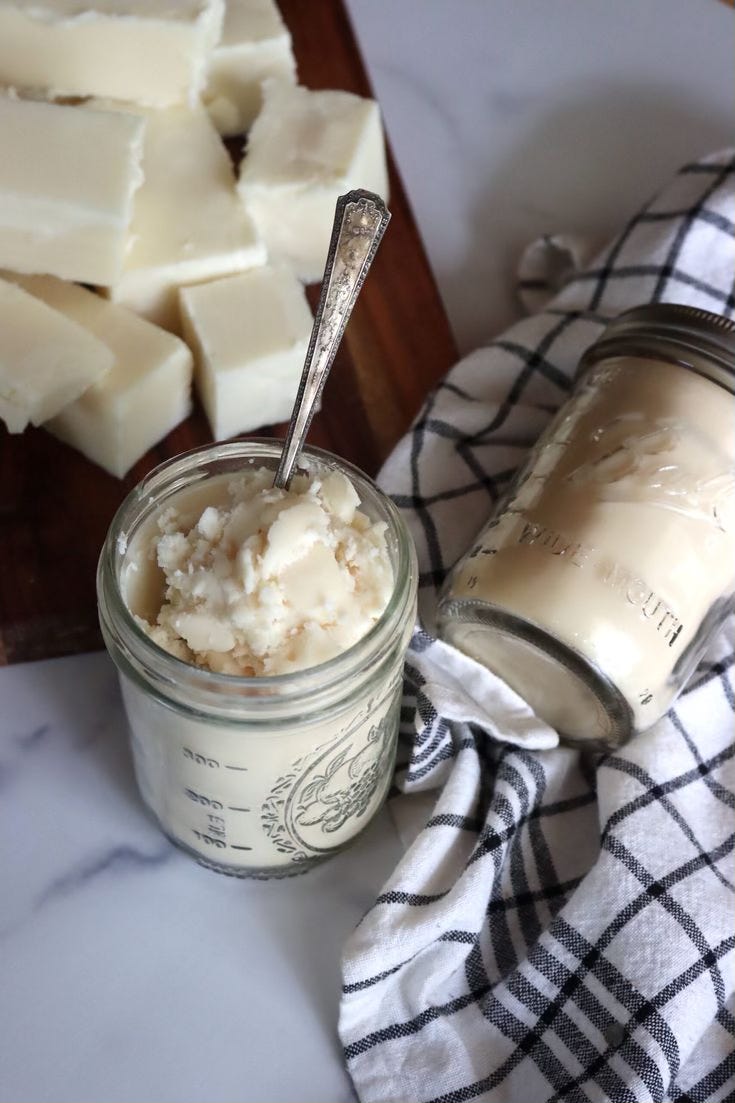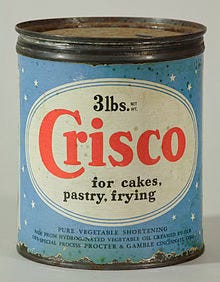The Complete Guide to Beef Tallow
The benefits of beef fat and why it’s become so popular
A long time ago, in a kitchen far, far away, beef tallow occupied a prime spot in people’s pantries.
Before olive oil, avocado oil, or industrial seed oils became popular, animal fats like beef tallow, along with its close relative pork lard, were the cooking fats of choice for many families, delivering perfectly crispy fries and adding a savory kick to pies across the country.
Despite falling out of favor in the late-1900s, beef tallow has started to make a comeback.
In this post, we’ll look at the history and nutrition of beef tallow, and restore the reputation of grass-fed beef tallow to its rightful place as a champion of the modern pantry.
The tale of tallow
Believe it or not, there was a time in the not too distant past when tallow was the unsung hero of every American kitchen.
Don’t just take my word for it — flip open any cookbook from the 1800s or 1900s and you’ll find numerous recipes that involve liberal amounts of beef tallow. And it wasn’t only domestic kitchens that used copious quantities of the stuff either.
Before McDonald’s surrendered to seed oils, their fries were deep-fried in good, old-fashioned beef tallow. In fact, every fast food chain from Wendy’s to Burger King was aboard the tallow train.
And they weren’t even the first. When the Belgians invented French fries in the 1800s, they cooked them in beef tallow, and the delicious, nutritious, crispy golden potatoes made with it spread around the world.
This is surprising to many modern eaters, so used to consuming foods filled with seed oils. How can you even make french fries from beef?
What is tallow?
Essentially, tallow is just rendered, aka heat-processed beef fat. In other words, when raw animal fat is heated, the pure fat separates as a liquid from the meaty and fatty tissue. This process is called “rendering,” which is the physical separation of pure fat from the rest of the animal material.
When cooled and allowed to harden, it produces a product with a similar consistency to coconut oil or butter. Importantly, tallow is solid at room temperature (this will be important later).
Anyone who has ever made bacon will be familiar with the resulting “bacon grease” that is leftover — this is the same process. When it comes from a pig, it’s called lard. When the rendered fat comes from a chicken, it’s called schmaltz. And when it comes from beef, it’s called tallow.
But what is so special about this oily substance?
The nutritional value of tallow
Humans have been eating tallow since the dawn of time — the fact that woolly mammoths have a similar fat profile to modern day cattle is evidence of this.
Most of our ancestors recognized and revered the nourishing potential of beef tallow. For centuries, tallow and similar products were eaten to improving fertility, skin health, and overall longevity.
Why? Well as it turns out, tallow is an incredibly nutritious food.
High-quality beef tallow usually derives from fat around the cow’s kidneys because this fat (also known as suet or leaf fat) stores essential micronutrients, especially if the animal is grass-fed.
Grass-fed, finished, and pasture-raised beef tallow is vastly superior to the grain-fed, factory-farmed alternative.
Factory farmed cattle that are fed GMO corn and aren’t allowed outside do not have the nutrients stored in their fat for later use. On the other hand, cows raised with access to fresh, green grass and sunlight are able to produce and store nutrients in their fat.
These nutrients include:
The anti-microbial palmitoleic acid, which has been shown to play a vital role in counteracting oxidative damage from the sun and seed oils by boosting collagen and elastin production.
The anti-inflammatory Conjugated Linoleum Acid (CLA), which has been linked to cancer prevention, greater cognitive function, and improved body composition.
Choline, which helps your brain and nervous system regulate memory, mood, muscle control, and other functions; in addition to forming the membranes that surround your body's cells.
Important fat-soluble vitamins like A, D, K, and E. In fact, the vitamin A in grass-fed beef tallow is higher than the vitamin A content in muscle meat.
Saturated fatty acids, which are the opposite of the inflammatory unsaturated fats found in seed oils
It’s clear why a pure, natural fat with such properties would be highly useful for cooking and other purposes (like cosmetics).
Furthermore, it was plentiful in the farm-centric pastoral society of early America. Cheap, good for you, and delicious— what else do you need?
And yet, it still fell out of favor. Why?
Enter Seed Oils
The answer is simple.
The rise of seed oils along with state-sponsored, saturated fat scaremongering became the downfall of tallow.
To understand this, we need to turn our attention to the beginning of the 20th century, when a candle-maker and a soap-maker by the names of William Procter and James Gamble ran into an issue with their company.
At the time, Procter & Gamble owned a number of cottonseed oil factories that manufactured the oil they used in soap and candles. However, with the invention of the lightbulb, the company had found itself with a surplus of cottonseed oil.
Enter German chemist E.C. Kayser. In 1907, Kayser arrived at the headquarters of Procter & Gamble with a miraculous invention. A ball of fat. While it had the appearance of tallow and responded to cooking in the same way as tallow there wasn’t a cow in sight. In fact, it was made from cottonseed oil by a chemical process called “hydrogenation”— the first time ever a human had turned a liquid, unsaturated fat into a solid one.
In an effort to convince the masses to eat this lab-generated tallow and lard substitute (later called Crisco), Procter & Gamble embarked upon one of the most impressive marketing feats of the recent past. Not only did they tout the brilliance of Crisco, they demonized animal fats in order to do so.

Trusty tallow and reliable lard didn’t stand a chance.
In the 1950s, the attack on animal fats advanced, with scientists chiming in on how saturated fats could cause heart disease. After that, it didn’t take long for beef tallow to find itself substituted for seed oils in the name of “health”. And so began the decline of animal fats, and the floodgates were opened for synthetic processed food more broadly.
The emergence of ardent animal rights activism in the 1970s added additional fuel to the fire, which further forced fats like beef tallow out of favor.
And the result is now a once-staple food of simple American kitchens is completely unknown to all but the most knowledgeable health connoisseurs such as yourself.
The tallow renaissance
Yet no matter how much Proctor and Gamble spent on propaganda over the 20th century (the total is likely in the hundreds of billions of dollars), no matter how much they paid off all the scientists and doctors to ignore this ancient culinary tradition, no matter how many housewives they paraded out in magazines promoting the superiority of Crisco, the truth could not be suppressed.
Thus, in recent years there has been a resurgence of interest in ancestral animal fats and traditional cooking ingredients. People are beginning to wake up to the fact that our modern, seed oil-filled lives are destroying us, and yearning for something better.
From tallow skincare, to tallow soaps, to tallow fried chips, an entire generation of consumables are being re-imagined with tallow (and other natural ingredients) instead of the synthetic concoctions of the 20th century.
To conclude this investigation, we will now look at why tallow is the ideal choice of fat for many functions across modern life.
At every level, tallow is the ideal cooking fat, especially when it comes to the time-honored tradition of deep frying.
Enlightened readers of Tan Land will already be aware that grass-fed tallow is the superior frying fat. However, for those of you in need of a refresher, here are the main reasons why we fry MASA Chips in the stuff:
It’s not a seed oil
Enlightened readers of Tan Land know how terrible seed oils are, because of their high PUFA content. Tallow is one of the lowest PUFA fats available.
It’s nutritionally superior
Unlike plant based oils, including coconut, olive, avocado, and of course seed oils, grass-fed beef tallow is a rich source of micronutrients.
It’s easy to find
And unlike other animal fats, which are often hard to find high quality versions of (most chickens and pigs are raised on high PUFA diets of soybeans), tallow is relatively accessible, because 100% grass fed beef is easy to find. If you can’t buy tallow, you can always make it yourself
It’s relatively cheap
Compared to other high quality fats like butter or ghee, tallow is cheaper because beef fat is produced in larger quantities
It’s easy to source locally
Unlike coconut, olive, or palm oils, which are imported, tallow can be made wherever cows are raised. No matter where you live in the US, there are cattle within 100 miles of you.
It’s better for the environment
Seed oils require vast amounts of arable land, water, and resources. Most of the time, to speed up the process and improve yields, all manner of toxic pesticides and fertilizers are used.
No chemical processing
Compared to seed oils, which are made with various unpronounceable chemical solvents are used during mechanical processing to create a toxic cocktail ready for public consumption, tallow is produced by taking the fat off grass-fed cattle from a few miles away, heating it up gently so that it melts, then leaving it to cool.
Reduce supply chain waste
No one uses tallow today, so there is so much available. Instead of sending it off to make biodiesel, how about we actually get the most out of this intensely valuable food source
It is shelf stable
Unlike butter, tallow is stable at room temperature and doesn’t go bad
It has many uses
Not only can you use it as an all purpose cooking fat, and can be used to make soaps and all sorts of cosmetics.
It makes food taste great
It meets the sniff test
For many of us, our ancestors ate tallow in copious amounts, not least because it follows the logic of traditional top-to-tail eating.
Summary
In this post, we have seen how beef tallow didn’t simply fall out of favor by accident—rather, it was aggressively pushed to the wayside by Big Food conglomerates so they could sell more seed oils, not because it was an inferior product.
But that doesn’t change the fact that grass-fed beef tallow is the ideal fat for the 21st century.
It checks off all the boxes people care about:
Health
Environment
Taste
While P&G may have spent billions on demonizing this food, fortunately, the path to renewal will be much easier, since we have Truth on our side.
And the first step is in re-familiarizing Americans with this storied part of their culinary heritage.







Which brands would you recommend if purchasing tallow